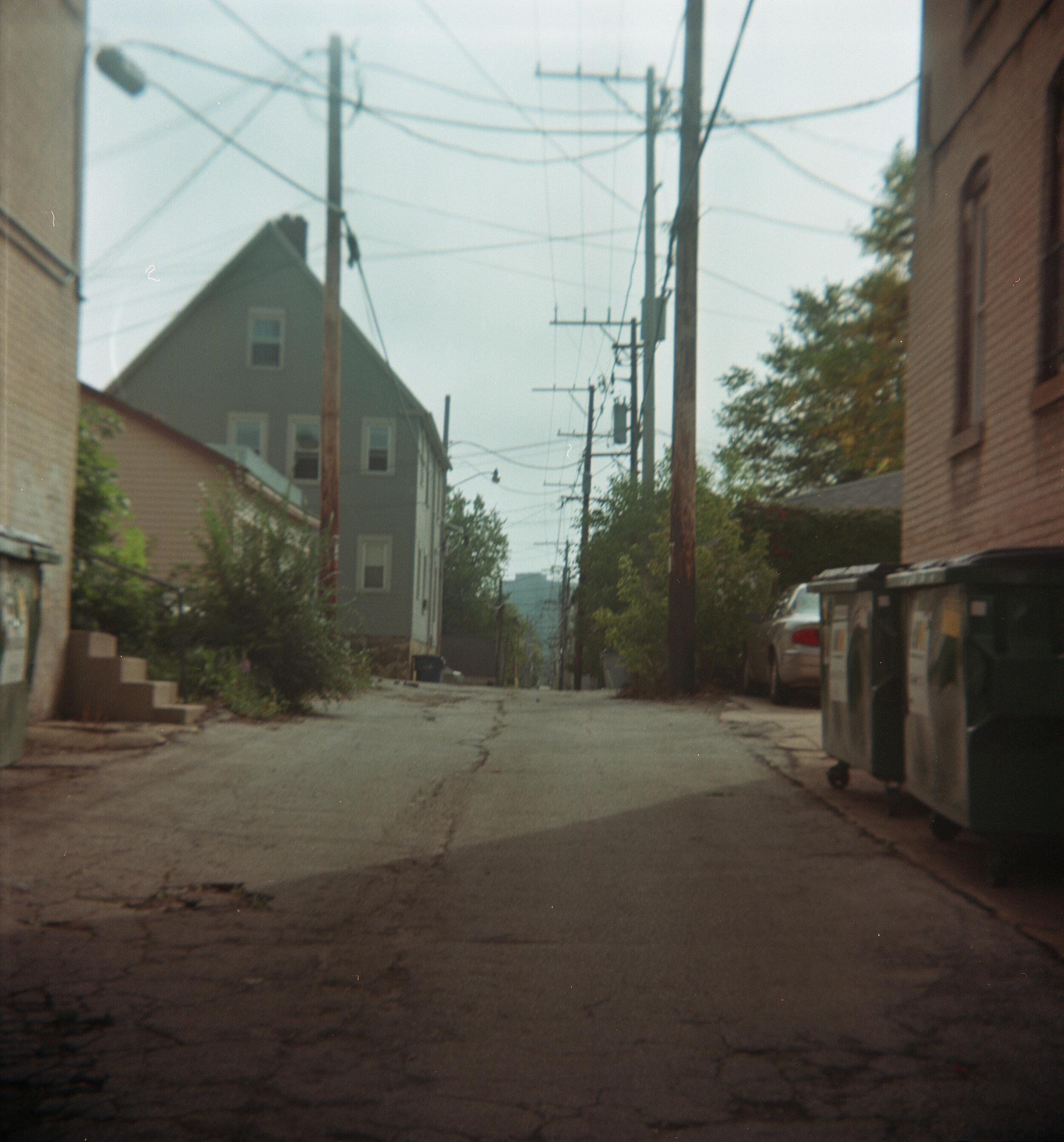March 7TH 2021
[Update 10/10/21]
Spartus Full-Vue
America had a handful of well known camera manufacturers, Kodak, Argus, Polaroid, and Realist being the first ones that come to mind. Another company, coming out of Chicago in the early 1940s, was The Spartus Camera Corporation. A very interesting history is involved in the mergers/acquisitions of companies and sale of these cheaper cameras. All to come out of the same factory under a myriad of different names, the one camera we will focus on is an imitation TLR. This was the first variation to come out in the late 1940s, the Spartus Full-Vue.
The Imitation TLR
There were two main types of cameras to come out of the TLR market. True focusing twin lens cameras and brilliant type. True focusing incorporated a mechanism to focus the taking and viewing lens together. Brilliant comes from the term used for a framing device that reflects off of a mirror, with no focusing ability. Examples of these include box camera viewfinders, along with early bellows cameras. Another type of camera that had these brilliant finders, was the market of fake or imitation TLR cameras. These cameras did not use a focusing mechanism for the viewing lens, while having a fixed or scale focus taking lens. This is the same as a box camera but in a different looking package.
Built from an all metal interior and metal controls, the Full-Vue features a black Bakelite textured body with painted metal accents. The Spartus Full-Vue really looks and feels the part. An all black design and matte finished controls, painted with an art deco styled front cover make this a very beautiful camera. This imitation TLR has a standard ground glass lens underneath the folding top cover. Although a bit different from other standard brilliant finders; this one is flat, not domed where you are looking. Right below the waist level finder, you can see the chrome latch that holds the film door closed. Push the latch up to release the door and load the film. The same motion is needed to lock the latch but may require a bit of force to completely secure the door. On the right hand side, you can see the winding knob with a directional arrow. Turn this knob clockwise while looking at the small red window on the backside of the camera until you see the number one. This camera takes 2 1/4 inch square images (6x6), and you should have 12 exposures on a standard 120 film roll.
On the right hand side of the camera, toward the lenses, is the remainder of the controls. You have a choice of Time or Instant above the shutter lever. Time is the bulb setting and instant is around 1/60th of a second. A thing to note is the shutter lever will only take one picture per cycle. You also cannot adjust the aperture, it is fixed somewhere between f/11 and f/16. There are two non standard strap mounting lugs on the camera as well, but no tripod socket or cable release on this particular example. This model of Spartus Full-Vue is the first variation that does not have a flash attachment. Subsequent models included a flash attachment for bulbs and were redesigned a couple of years later in a completely different style.
THE SPECS AND FEATURES
You can see the oddly bent plastic cover here on my example
Shutter Speeds - time (bulb), and instant (around 1/60th)
Aperture - between f/11 and f/16
Meter Type - none
Shutter - metal, single leaf
ASA - any 120 film, but lower speeds in bright light recommended
Lens - between 82 - 100mm plastic lens, 8ft to infinity, fixed
Flash Option - none, later models available with flash bulb attachment
Batteries - none
Film Type - 120 film
Other Notable Features - [on my version] no tripod socket, no threaded release, unconventional strap lugs
The Experience
This camera came across my path from a friend of mine who knew I shot with older cameras. It was in rough shape initially with a loud jingle when I first picked it up. I soon found the mirror had been broken and previously taped in a variety of ways. The tape was very old and dried out but still held a very small portion of the remaining mirror. After I found all of the individual mirror parts, they seemed to be in reasonable condition and large enough to be glued back together. Roughly assembled, the image through the viewfinder was still very dim, so I decided to replace the mirror. I bought a few different types of mirrors and polished metal sheets to make my own replacement. Once cut to size, adhered in place, and polished, I moved onto the lenses.
Fogged lenses seem to be a common problem I’ve been running across lately. This camera was no different with an almost opaque taking lens and very dim viewing lens. While taking the camera apart to clean, I initially had quite a lot of trouble with the taking lens. Being of a cheaper design, they were not made to be taken apart. I figured that I needed to remove the aperture inside the lens to clean the glass. The aperture consisted of two plastic discs that sat press fit into the barrel. It was difficult, but once removed I was able to clean the lens and proceed to reassemble the camera.
With the brilliant finder bright and working, and the lenses cleaned, I was ready to take the Full-Vue out for a walk. Before that I took to the internet to find a rough estimate of the focus distance, which was stated to be 8ft to infinity. The camera performed admirably with no issues on the couple of days I took the Full-Vue out. Hanging around my neck with a makeshift camera strap, I did my best to compensate for the parallax of the taking lens. I ended up coming away with some interesting looking lo-fi pictures. Very blurred edges and a shaper center made for a look of dreamy images. Contrast was almost nonexistent for this TLR, but I’m honestly not surprised.
The build quality of the Spartus Full-Vue is incredibly impressive. Designed to be a cheaper camera, Spartus seemed to use quality components and manufacturing. Built like a tank and quite heavy because of it. I found myself using the camera for more off the cuff shooting, the plastic lens made for some really interesting effects. Reminds me of a rougher version of the Argus 75. Overall, I had a great time shooting this camera. I would recommend that at some point everyone should give the Spartus Full-Vue or even one of the look alike TLR cameras a try. They give an incredible lo-fi Lomo look to pictures and are a better made alternative to other plastic 120 cameras.









